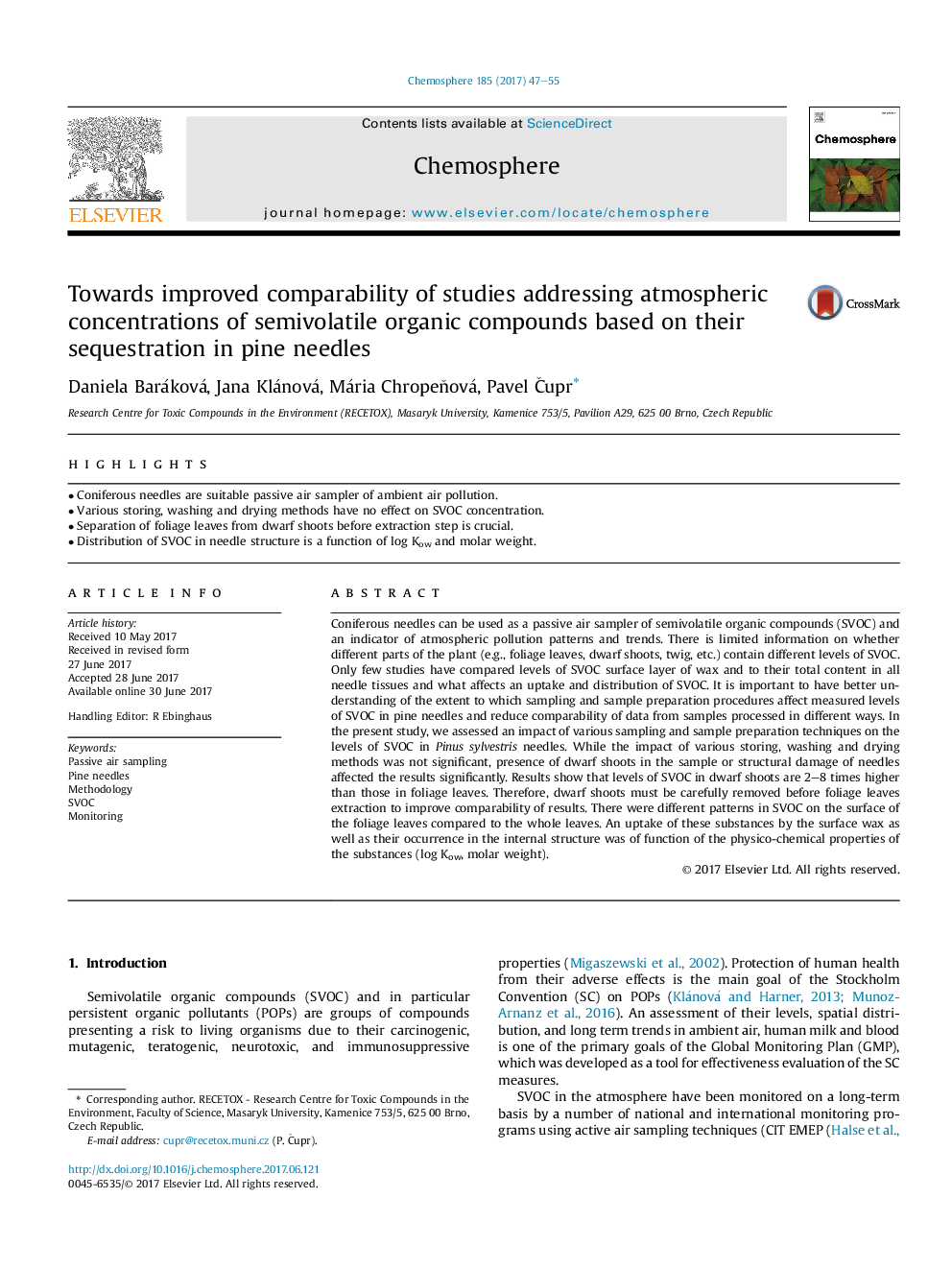| Article ID | Journal | Published Year | Pages | File Type |
|---|---|---|---|---|
| 5746684 | Chemosphere | 2017 | 9 Pages |
â¢Coniferous needles are suitable passive air sampler of ambient air pollution.â¢Various storing, washing and drying methods have no effect on SVOC concentration.â¢Separation of foliage leaves from dwarf shoots before extraction step is crucial.â¢Distribution of SVOC in needle structure is a function of log Kow and molar weight.
Coniferous needles can be used as a passive air sampler of semivolatile organic compounds (SVOC) and an indicator of atmospheric pollution patterns and trends. There is limited information on whether different parts of the plant (e.g., foliage leaves, dwarf shoots, twig, etc.) contain different levels of SVOC. Only few studies have compared levels of SVOC surface layer of wax and to their total content in all needle tissues and what affects an uptake and distribution of SVOC. It is important to have better understanding of the extent to which sampling and sample preparation procedures affect measured levels of SVOC in pine needles and reduce comparability of data from samples processed in different ways. In the present study, we assessed an impact of various sampling and sample preparation techniques on the levels of SVOC in Pinus sylvestris needles. While the impact of various storing, washing and drying methods was not significant, presence of dwarf shoots in the sample or structural damage of needles affected the results significantly. Results show that levels of SVOC in dwarf shoots are 2-8 times higher than those in foliage leaves. Therefore, dwarf shoots must be carefully removed before foliage leaves extraction to improve comparability of results. There were different patterns in SVOC on the surface of the foliage leaves compared to the whole leaves. An uptake of these substances by the surface wax as well as their occurrence in the internal structure was of function of the physico-chemical properties of the substances (log Kow, molar weight).
